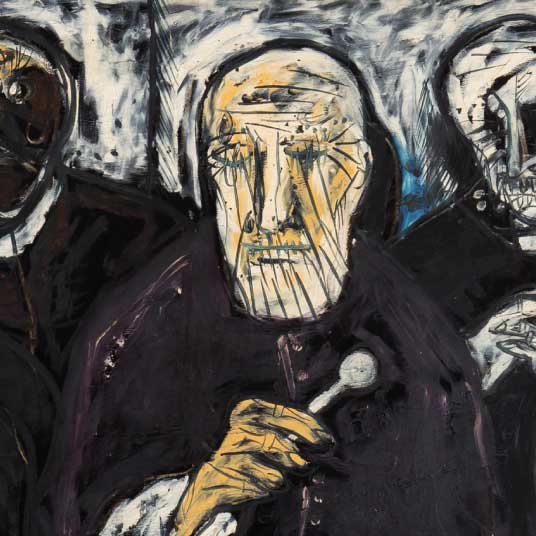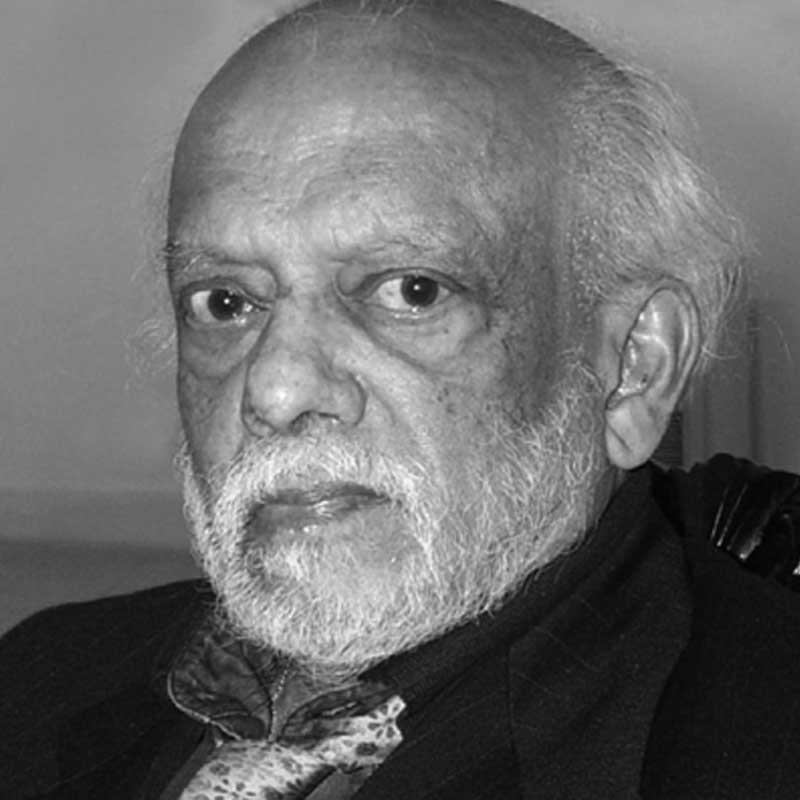
Francis Newton Souza (1924-2002) was regarded as the enfant terrible of the nascent postcolonial Indian art scene of the 1950s and 1960s. This reputation was based on his incendiary personality and his ferocious paintings, peopled by savage saints, brutish capitalists, cyborg soldiers, and female figures depicted as both voluptuous and predatory. Following Souza’s dramatic self-portraiture in his 1959 text, ‘A Fragment of Autobiography’, it has been customary to trace the origins of his adversarial aggressiveness to childhood trauma. The critic W G Archer wrote in 1965, for instance, that Souza’s experience of Portuguese rule in the Goa of his formative years, his father’s early death and his scarring by a virulent attack of smallpox gave the artist “a sense of life as cruel, violent, and unjust. He was led to envy but also to scorn figures in authority, and his powerful father-figures – priests, elders, businessmen, patriarchs – have often a fantastic grandeur but, at the same time, features that are moronic in their senseless stupidity.”
In ‘F N Souza: The Power and the Glory’, we approach these Freudian generalisations in a more nuanced manner. We argue that Souza’s bitter critique of religious authority emerged from a highly specific political context: that of his opposition to the conservative, Eurocentric Catholicism into which he was socialised as a subject of the Estado da India, the Portuguese Empire in India. Despite living away from Goa – first in Bombay and later in London – Souza remained psychologically entangled with the Estado da India for the first four decades of his life, from his birth in the comunidade of Saligao in April 1924 to Goa’s annexation by the Republic of India in December 1961, an act New Delhi justified under the sign of ‘liberation’. For most of this period, the Portuguese Empire was controlled by the dictator Antonio de Oliveira Salazar, whose regime was symbiotically supported by conservative Catholic clerics.
This exhibition takes its title from the closing line of the Lord’s Prayer, “For Thine is the Kingdom, the power and the glory, forever and ever, amen.” It also riffs on the title of Graham Greene’s 1940 novel, The Power and the Glory, whose central character, an unnamed ‘whisky priest’, is torn between belief and carnality, heroism and weakness. At the core of this exhibition is the fraught relationship that Souza, himself a ‘whisky priest’, negotiated between dogma and dissent, organised religion and eccentric spirituality. This relationship is explored across an expanded field of exhibits, including a selection of Souza’s works from the Jehangir Nicholson Collection, a set of his ‘chemical works’ on loan from the Pundole Art Gallery Collection, and an ensemble of Indo-Lusitanian sacred images borrowed from the CSMVS.
Watch a special walkthrough by curator Ranjit Hoskote here.

F N Souza was born in a Portuguese colony in Saligao, Goa in 1924. He was brought up by his Catholic mother to become a priest, only to show early signs of rebelliousness which became an integral part of his life and art. After losing his father at a very young age and being afflicted by a serious bout of smallpox, he vowed to go about life his own way.
After graduating from Sir J J School of Arts in 1945 he went on a tour of Italy on an Italian Government Scholarship in 1960. Souza emerged as an artist-activist when he was expelled for participating in Left wing political activities- the Quit India Movement from the J J School of Art.
In 1947, he founded the Progressive Artists Group along with M F Husain, S H Raza, H A Gade, Bakre, Akbar Padamsee, Tyeb Mehta and others advocating a forceful modernism that he believed would go beyond the confines of nationalistic art.
Souza moved to London in 1949 for creative freedom and international recognition. After an initial struggle he finally started making his mark. In 1976 he migrated to New York which became home for several years where he developed a bold style with confident strokes and fierce crosshatchings. Souza was known for his head portraits, nudes and landscapes and went on to discovering the medium of chemical alteration works- a method of drawing with the use of a chemical solvent on printed pages without destroying the surface.
Souza died in India in 2002.